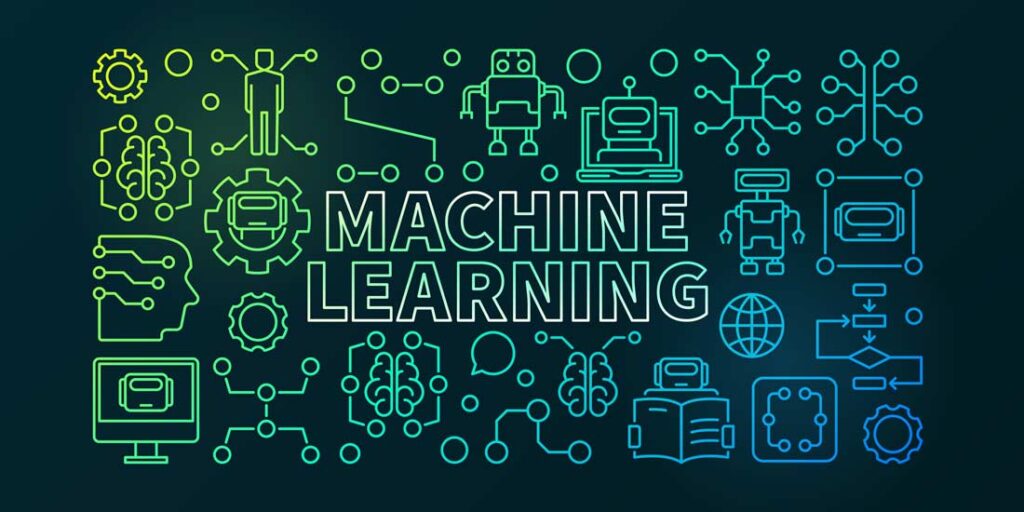For those unfamiliar, Reinforcement Learning (RL) is the science of decision making, specifically referring to how certain behaviors are encouraged, and others discouraged. It is one of three approaches to machine learning (ML) and it has the potential to yield simple solutions to complex problems using a systematic, rewards-based method within a particular environment to ensure the greatest reward. But how does RL differ from other methods?
Unlike unsupervised approaches to ML – where an algorithm analyzes a large dataset to find clusters or patterns or, supervised approaches, which teach a model by giving it the right answers – reinforcement learning is a method that trains a “machine” to make a sequence of decisions to learn about its environment and assess opportunities for the greatest reward.
Here, the agent with the model decides to make certain actions based on both the environment’s current state and all the related known history. The environment then naturally responds to those actions. Once complete, the agent then observes those responses and assigns a certain reward to them. Essentially, the goal of the reinforcement learning model is to ascertain the best action that the machine can conduct to give the highest reward within the environmental state. Put simply, RL is an iterative process that involves continuous learning to reach the optimal result.
Reinforcement Learning in Real Life
Let’s look at how RL is being used today. When a robotic vacuum cleaner maneuvers around a new environment and hits a wall or obstacle, it responds by re-routing to a clear path. Once the internal mapping has been completed, the reward is the new ability to navigate the room without bumps or blocks in the future, leading to a clean surface with a minimum of effort.
Or consider a self-driving car to further illustrate the capabilities of RL. In this example, the environment is the road, the lines, the lights, the cars and the agent is the brain of the car. It is critical to ensure that the vehicle can navigate routes, find and park in available spots, and change lanes. RL allows the vehicle to gather information about its environment and be rewarded for good behavior by way of successfully fulfilling its tasks. Conversely, a negative reward is given for taking the wrong action. Self-driving cars are loaded with data regarding the road mapping, existing laws, and preferred routes, and will develop learned behavior over time using RL.
The autonomous vehicle will use two systems to gather additional information and seek rewards:
- Exploration – which is the process of purposely choosing an action for the sole purpose of understanding the outcome state.
- Exploitation – where it chooses the action it thinks is best suited to get the best reward.
Using exploration, the vehicle will give detailed and up-to-date mapping in a dynamic real-world environment, whereas the exploitation approach allows it to take advantage of opportunities to bypass areas of predictably heavy traffic. Balancing both systems is important as it provides the greatest possible reward for the car’s performance.
The importance of balancing exploration versus exploitation can also be seen when employing RL in sophisticated systems such as retail marketing. RL is quickly becoming the dominant machine learning system in retail environments because of its ability to support both exploration and exploitation. As a result, retailers can maximize profits in the ever-changing environment of their businesses.
For example, when the COVID-19 pandemic hit, people had to isolate themselves, and many brick-and-mortar businesses were forced to pivot to online sales. Sales models that had been previously effective in-store—e.g. using discounts to lure customers into stores—had to change in order to succeed in the digital marketplace. Reinforcement learning, with its suite of digital consuming purchasing data and its ability to assess and optimize online sales strategies, helped retailers adapt to an “online only” environment.
Understanding customer behavior due to a possible recession is another use case where retailers are applying reinforcement learning. Here, RL is used to assess, identify, and learn from purchasing trends using historical data on consumer behavior during recessions. It is then coupled with data collection on the efficacy of real-time promotional activities, which gives retailers detailed and usable data on how to retain their customers when retail spending dips.
The Power of Reinforced Learning
RL is a detailed and fascinating method of machine learning, which has a myriad of benefits for machines and businesses operating in many different spheres from domestic duties to automation to retail. Understanding the intricacies of how RL gathers, assesses, and prioritizes best practices enables owners and operators insight into how the technology can best be used to achieve their goals.
About the Author

Anthony Chong has helped start multiple enterprise software companies and is CEO/Co-Founder of IKASI, providers of sophisticated, predictive AI solutions that help organizations drive profits. Prior to founding IKASI, he was the head of Data Science at Adaptly (acquired by Accenture)– a company that managed social media advertising and engagement for large brands at the scale of millions of customers. Anthony’s team pioneered the introduction of an automated sentiment analysis system that analyzed and predicted customer sentiment across millions of engagements. He is a graduate of Caltech, where his research focused on building AI’s to maximize value in game theoretic environments (Algorithmic Game Theory).
Sign up for the free insideBIGDATA newsletter.
Join us on Twitter: https://twitter.com/InsideBigData1
Join us on LinkedIn: https://www.linkedin.com/company/insidebigdata/
Join us on Facebook: https://www.facebook.com/insideBIGDATANOW





Speak Your Mind